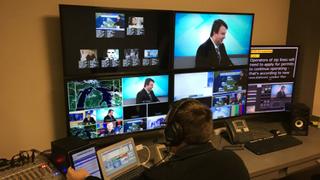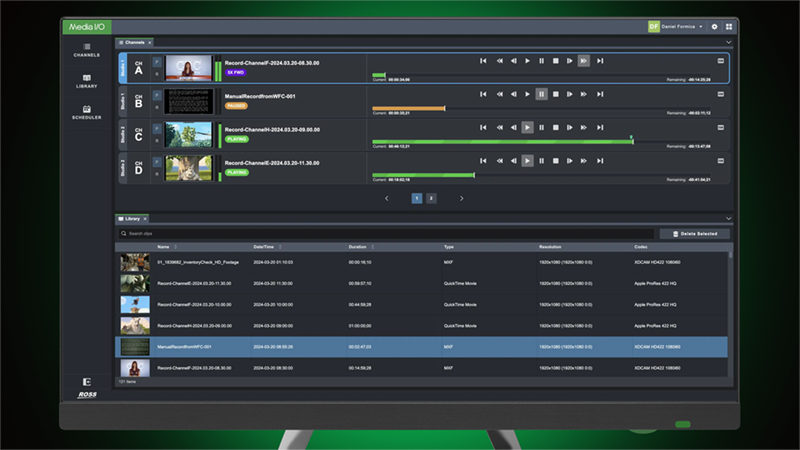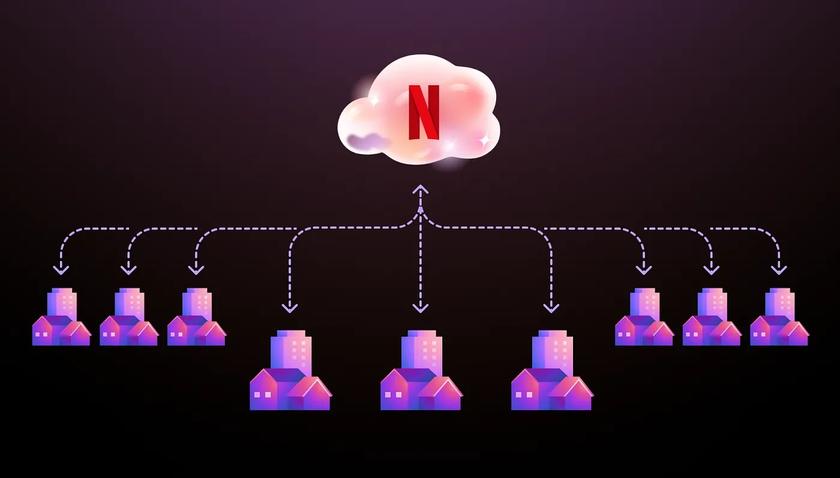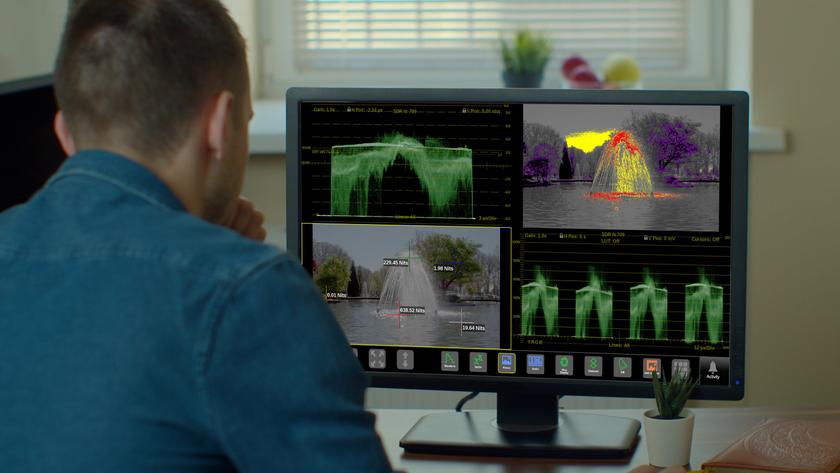Smaller Market LPTVs Optimistic Post-Auction
CADILLAC, MICH.—At this time last year, the spectrum auction was on the horizon—and so was a great deal of uncertainty for LPTV stations. An official clearing target for the auction had not yet been set. There was talk of an 84 MHz clearing target with TV channels 38 and above being auctioned to the highest wireless industry bidders. By the time the final auction plan was announced, the clearing target for Stage 1 of the reverse auction had increased to 126 MHz—a target that would have cleared TV off every RF channel above 29.

Morris Langworthy directs a newscast between work on upgrades to WMNN’s control room.
If an 84 MHz clearing target didn’t make LPTV operators nervous, the new 126 MHz target certainly did. Unlike full-power and Class A stations, LPTV stations were offered no protection in the auction. As full-power or Class A stations are repacked post-auction, they’ll have priority for the remaining channels.
If the auction had concluded with 126 MHz of the TV spectrum cleared to make room for cellular services that would have left relatively little room for primary services, especially in medium to large markets, let alone much space at all for LPTVs.
A SURPRISING SERIES OF EVENTS
As the auction began last June, things started to look brighter for the LPTV industry, and perhaps the television industry as a whole. During the first stage of the spectrum auction—the stage with a 126 MHz clearing target—broadcasters asked for a whopping $86 billion to clear their spectrum while wireless providers were only willing to spend $23 billion for that spectrum.
During Stage 2, broadcasters lowered their price to under $55 billion, as the amount of spectrum up for auction shrunk to 114 MHz. The bids of wireless providers didn’t change much, shrinking to $21.5 billion for the reduced amount of spectrum.
Get the TV Tech Newsletter
The professional video industry's #1 source for news, trends and product and tech information. Sign up below.
By Stage 3, the amount of spectrum up for auction was down to 108 MHz, with broadcasters’ price to sell out reduced to just over $40 billion, while wireless bidders offered just shy of $20 billion for the spectrum.
The spectrum auction concluded after Stage 4. It ended, incidentally, with the originally discussed 84 MHz of TV spectrum cleared to make room for wireless providers.
A CHANGE OF PLAN
Early last year, at a time when the spectrum auction was on the horizon, I put plans to expand WMNN—our 24/7 local news channel in northern Michigan, which happens to be an LPTV station—on hold. I also froze plans to build several additional stations for which we currently hold construction permits. The risk was too high; if 126 MHz was cleared and we were left without any channels available for our LPTV licenses, we could end up with hundreds of thousands of dollars in useless equipment and no way to gain a return on investment.

WMNN Chief Photojournalist Wyatt VanDuinen and Reporter Vic McCarty film an interview.
After each stage of the auction, I found that many LPTV operators I spoke with, like myself, were becoming more optimistic about the future of our industry. By the time Stage 3 of the forward auction concluded, I felt confident enough in the future of our industry to begin moving forward with our plans for expansion.
Near the end of last year we secured tower space for one of our new LPTV stations. We began acquiring equipment to put the new station on-air, acquiring programming and preparing for the launch of the new station. Right now, we’re simply waiting for winter weather to clear as access to this particular tower site is difficult at this time of year, especially for a task like new antenna installation.
As the year drew to a close, we also began moving forward with our plans to expand WMNN. Last month, we doubled down on our commitment to producing live, local programing throughout our large geographic DMA with the acquisition of a satellite truck. We’re currently in the process of outfitting an additional microwave truck for live, HD field production, allowing us to cover sports games from two different schools in the viewing area every night. We’re upgrading our studio’s production control room, allowing us to produce more in-studio programming every day, not just for WMNN, but for the other LPTV stations we’re working to launch as well.
We’re optimistic enough about the future of TV post-auction that we’re even evaluating the launch of a diginet, which would build on the model we’ve established at WMNN, offering 24/7 news on a national level not just to LPTV affiliates, but to full-power stations as well.
A CHANGE OF THE GUARD
While I’m still concerned for the future of LPTV in major metropolitan areas where spectrum is scarce, I feel much more comfortable about the immediate future of our industry in smaller markets—the sort of markets we currently operate in, where there are fewer stations competing for the bandwidth that will remain available to TV once the auction is complete.

Chief Meteorologist Morris Langworthy, Anchor/Producer Jacob Owens, Forecaster Dylan Rodenbaugh and intern Rain Johnson-Hill broadcast live severe weather coverage from the WMNN studio.
The lack of demand from wireless providers for more than 84 MHz of TV spectrum was reassuring, but perhaps even more reassuring is the changing of the guard at the FCC.
Tom Wheeler left his position as FCC chairman in January. His replacement, Ajit Pai, has personally told LPTV operators that he believes low-power stations are a valuable resource; a resource with room to grow.
As the repack approaches, it’s clear that we’re not out of the woods just yet, but with a new chairman taking the reins at the FCC, limited demand for TV spectrum from wireless providers during the spectrum auction, and the auction nearing its completion, the future of LPTV looks, perhaps, the brightest it has in several years; especially for stations willing to take a few risks.
Eric Wotila is the general manager, MI News 26, an LPTV station based in Cadillac, Mich. He can be reached at ewotila@minews26.com.

TV Tech Summit: Networks, Stations Explore the Future of News and Sports Production

Sponsored: The Feed Room Is Now a Web Browser










